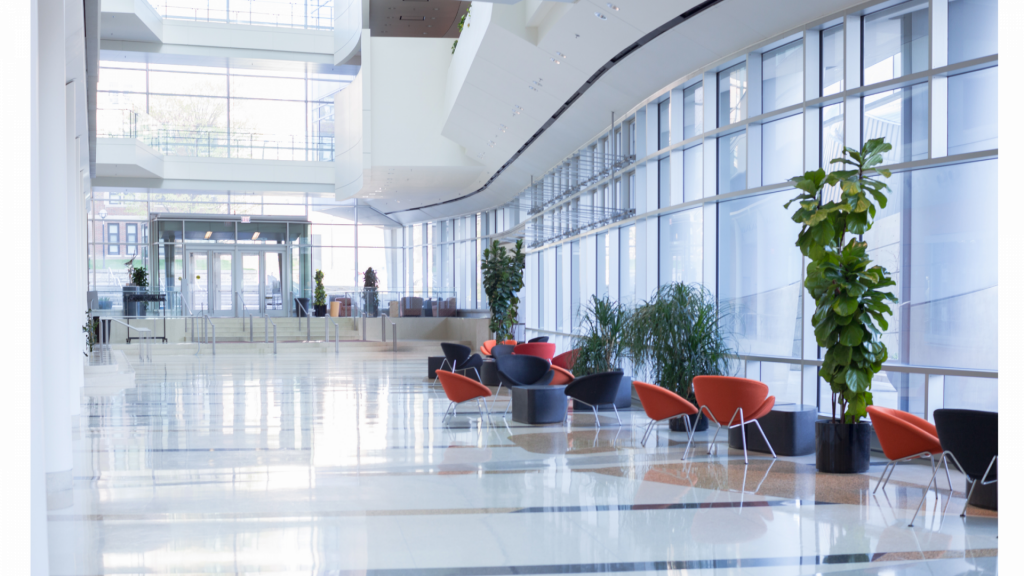The common area is a “necessary evil” in leases- it covers everything from elevator shafts, secondary means of egress for life safety reasons; and HVAC vertical penetrations to the restrooms. Tenants pay, directly or indirectly through rent, for the maintenance of these areas. The combination of building utility areas and presentation spaces make up 10% to 15% of the rentable square footage in suburban offices and upwards of 22% to 25 % in city offices. For the most part, these common areas are really just pathways to a space that is often shut off from the rest of the building, which is why tenants often question the common area factor. That is until now, when tenants and landlords are seeing better opportunities to use the common spaces and it’s actually saving tenants money.
The Changing Definition of a Lobby
The definition of a lobby as a large entrance in a public building dates back to the 1500’s. For the next four centuries that’s pretty much all it was, a space one passed through quickly or just an oversized corridor connecting the elevators and the outdoors. In 1984, The New York Times featured an article about the changing attitude towards lobbies, referring to them as atriums or gallerias. In essence, the article says lobbies are becoming grander and their function was shifting to a more welcoming destination. However, no matter how architecturally appealing they became people still used lobbies as a means to an end point. That is until now, when technology has changed the way we use space. Developers are making lobbies into sensory appealing places where people are pausing, even parking themselves for extended time periods. It’s partially due to the convenience that people are no longer tethered to a desk and partially to the Millennial generation communal work style preference. As we move further away from the need for a traditional office, tenants will find it will become more cost effective to rent less area, but they’ll still have plenty of [common] space.
High Traffic Areas
Elevators/stairwells, anywhere food is available, restrooms- all high traffic areas that wouldn’t necessary be the first place people would think to collaborate. However, researchers are finding that accidental interactions are the most productive collaborations. Landlords are responding by adding perks to these areas such as alcoves, wider corridors, and the arrangement of furniture. Companies are also doing their part- Google has a rule in its New York office that no office is more than a 150 feet from food and they purposely slow the speed of elevators between floors. Urban Outfitters in Philadelphia’s Navy Yard opted for open, wide stairwells and comfortable seating areas. When Steve Jobs redesigned Pixar he obsessed over the locations of the bathrooms, placing them off the atrium. The idea is that coworkers will bump into each other causing an organic collaboration. The cost benefit of using these common areas are tenants spend less adding the traditional office furniture- a large table replace desks, couches replace dozens of office chairs.
Future of the Common Area
Whether or not you’re for the open office concept, the sentiment that it encourages collaboration is the new norm. In the same regard, adding opportunities for people to talk by utilizing common space begets productivity. Conference rooms are no longer going to be the primary place to generate group ideas. Brainstorming may happen in the tunnel from the subway stop to the lobby or on the stairs between the third and fourth floor. The future is that what some deem the “necessary evil” in the lease could be the birthplace of the “next big idea”.

